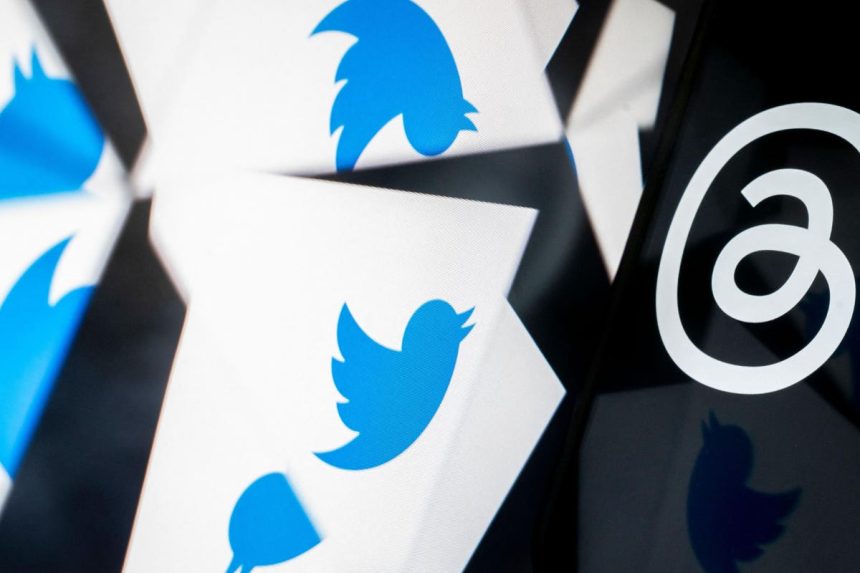Watching Twitter-X go through a super-nova-style implosion, complete with large layoffs, rebranding, a major exodus of advertisers and advertising revenue, a new CEO and the suggestion of a new, profoundly different business model, is both painful, and instructive. Add-on the emergence of a diverse pack of new entrants into what was a relatively staid industry, and what we are witnessing, playing-out in real-time, in front of all of us, is a significant rearrangement of an entire industry, and the rules of engagement that have defined it since its inception. This is truly a disruption saga, written large.
The Emergence of Microblogging
Microblogging is well-described as “a short piece of content designed for quick audience interactions;… a combination of instant messaging and content production.” Microblogging was born out the disruption of more traditional pre-digital information media, such as newspapers, magazines, radio and television. Besides their 24/7 availability, the early microblogging sites, such as: digg, tumblr and Reddit, adopted a real social media appearance, which actually made popular participation possible in what had historically been an elite-dominated, pure push, one-to-many broadcasting model. As with other early social media entrants, such as Six Degrees (1997), Friendster (2002), and MySpace (2003), the early microblogging sites were the result of leadership choices that jettisoned exclusivity and invited everybody in as a contributor, mixed entertainment with news, and, along the way, changed our world.
Trying to conclusively trace the evolution of microblogging is difficult. Suffice it to say, in 2004, one such claimant to the beginning of microblogging was digg, which appeared as a platform for sharing websites, which were then voted up-or-out by interested readers. By 2012, digg was attracting 3.8 million unique visitors monthly. The success of the digg format eventually led to the creation of Reddit, in 2005, which was seen as a social news aggregator, inviting text posts, images and videos for discussion, in addition to what had already been available at digg. Reddit quickly attracted a loyal fan-base, who participate in short-form, often spirited, conversations in topic-focused micro-communities, called “subreddits.” These discussions are moderated by redditors, who are independent of the private company which owns Reddit. By February 2023, Reddit’s popularity propelled to being the tenth most visited website in the world, despite its quirky and complex user screen experience.
Enter Twitter
While “tenth most visited website in the world” might sound great, you should also know that, in 2022, another microblogging site called Twitter was then the seventh most popular social media site in the world, according to a Hootsuite survey, and Reddit did not even make that survey’s list. It is also quite likely that Twitter, or X, as it is now called, could conceivably no longer again make that same list in the future.
Twitter began in 2006, when Jack Dorsey, then a undergraduate student at New York University, originated the idea of a short-messaging service for the internet, and with a group of colleagues launched Twitter, offering the opportunity to communicate with a global audience in 140 character bursts, or tweets. Originally destined for such utility service as “status updates,” Twitter morphed into a community of more than half a billion members, by the Summer of 2023. Along the way, however, even Twitter’s founders struggled to define just exactly what it was, and therein lies the leadership challenges for the future.
The Changing Nature of Change in Microblogging
Change is faster than ever before
Twitter’s position as the leading microblogging site, between its establishment in 2006 and the present, was essentially unchallenged. Tumblr came closest to Twitter in terms of how it worked, but even that was not very close. Admittedly, tumblr reached 568 visitors in 2018, but then lost 369.6 million of them, the same year, after banning adult content. Then, in 2022-2023, Elon Musk’s attack on the site’s leadership, and his eventual purchase of the business, followed by a number of strategically puzzling leadership choices, led, in a very short time, to an unprecedented emergence of at least six, credible, insurgents, who sensed new opportunities in this mature market: Threads, Mastodon, Bluesky, T2-social, LinkedIn and most recently Tik-Tok text. The pace of change, and the landscape of microblogging had changed, probably forever.
The Customer Experience is everything
It was not so long ago that an industry was defined by its assets; every steel mill, every automobile assembly line, every supermarket, looked alike, employed the same talents, and offered virtually identical products. Much of what we take for granted in strategic management is based on the assumption that these are immutable industry characteristics; but that is no longer true in microblogging. Threads, LinkedIn and Tik-Tok all originated in vastly different businesses. They have different core-competencies; in fact, they differ from each other in almost every manner; but they are pursuing the same market. This is what Rita McGrath has referred to as “arenas.” The rivals are pursuing the same customer experience, but come from different starting points; and, maybe most important, expect by birthright to play by different rules.
The collapse of traditional barriers to entry
When everybody in an industry did the same thing, in the same way, with the same sorts of people, the intellectual property in the equipment and products, the tacit knowledge in the processes, the well-established brands and the familiarity born of success, were all formidable barriers to entry to potential insurgent rivals hoping to enter a competitive marketplace. In microblogging, this is no longer the case! Instagram had no real experience in informative microblogging, other than viewer reactions to images, but Threads reached a membership in excess of 100 million in two days, which was a faster success story than Pokémon enjoyed; and lost much of it, just as quickly. The old barriers to entry may have kept traditional rivals out, but new rivals are often not impeded at all by such legacy defenses.
Disloyalty has become easier
Disruption is all about making disloyalty easier than loyalty. In mature, unchanging industries, the monochromatic nature of competition makes even small change seem to be a monumental challenge; inhibiting leadership risk-making. Success breeds misguided self-assurance. Loyalty is assumed to be forever. If new, insurgent, rivals add all sorts of glittery new offerings, emerging from profoundly different industry experiences, then the new arena quickly becomes one that exudes reasons to be disloyal. Traditional brands, hewn from battles between identical rivals, lose their potency when the new market-insurgents also have big-brands. Twitter against tumblr is one thing; Twitter against Meta (Threads), and Microsoft (LinkedIn), and Tik-Tok, all at the same time, is something profoundly more difficult.
The new role of business model innovation in driving change
Today, after years of industry stablity, there is suddenly no paucity of innovation shaping microblogging’s new landscape, but unlike so many industries where the term “innovation” exclusively implies technology, the new reality of competition in the microblogging arena is that it is business model innovation that is the primary source of innovation today. This, in turn, requires new organizational capabilities, and new, open, leadership mindsets, compared with those historically prized by technology-led organizations.
A New Competitive Landscape for Microblogging
Clayton Christensen, who coined the term disruption, used changing industry participation as a sure indicator of real disruption. In today’s microblogging arena, there is no doubt that this on its way. Going from no rivals, to three, or more, powerhouse, rivals is a sure sign that the microblogging arena will never be the same again. Leadership will be tested as never before. Big leadership names, and big egos, are also now on the scene, including Elon Musk and Mark Zuckerberg. They come-out of a Silicon Valley culture of “leader as hero,” and big risk-making cultures, something that has not previously been part of the microblogging scene for quite a while. In addition, they can fall back on corporate portfolios rich in talent and cash. This is a different ball-game, and, for sure, there will not be more than one or two winners. Who wins, and why, will all come down to leadership choices.
Read the full article here










